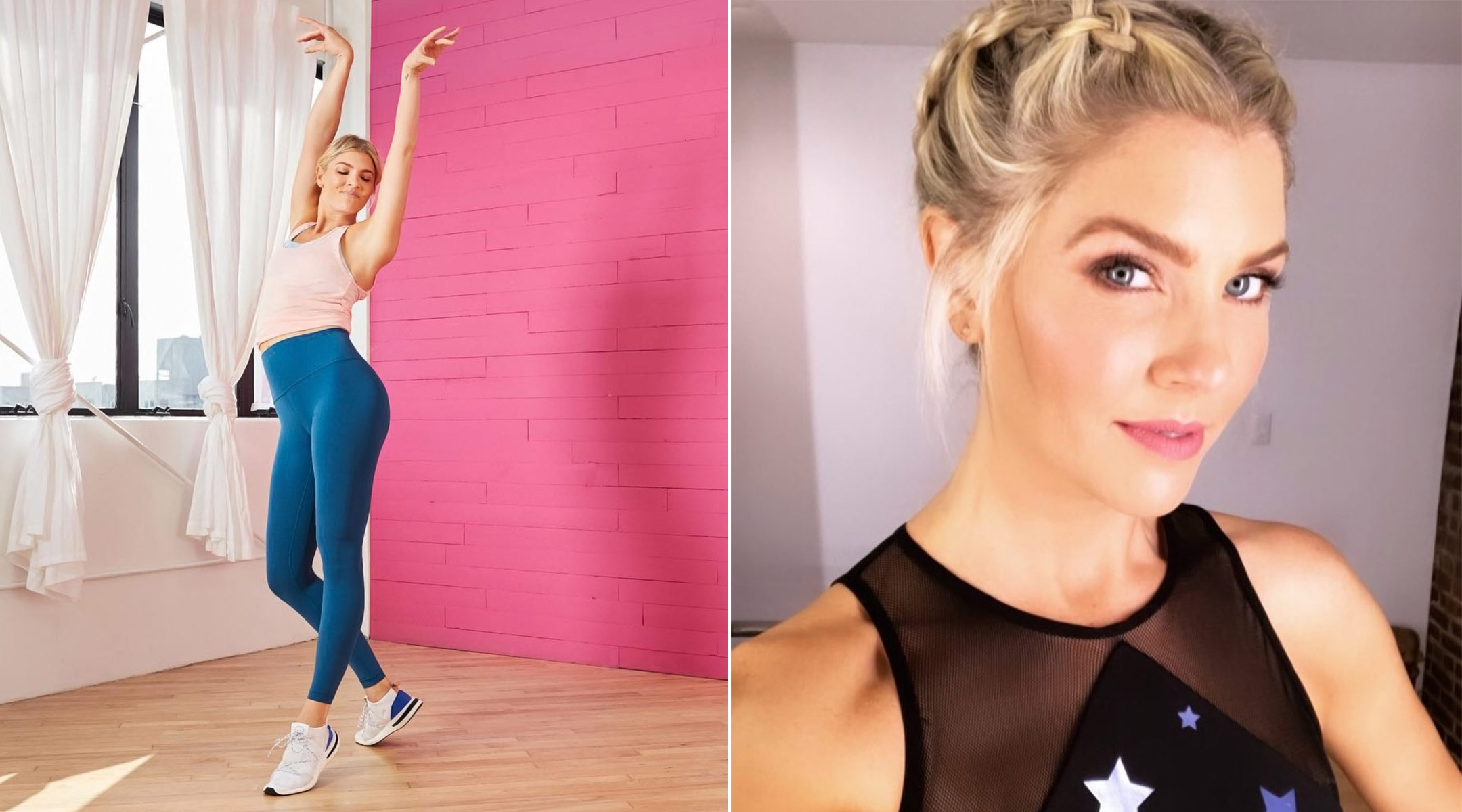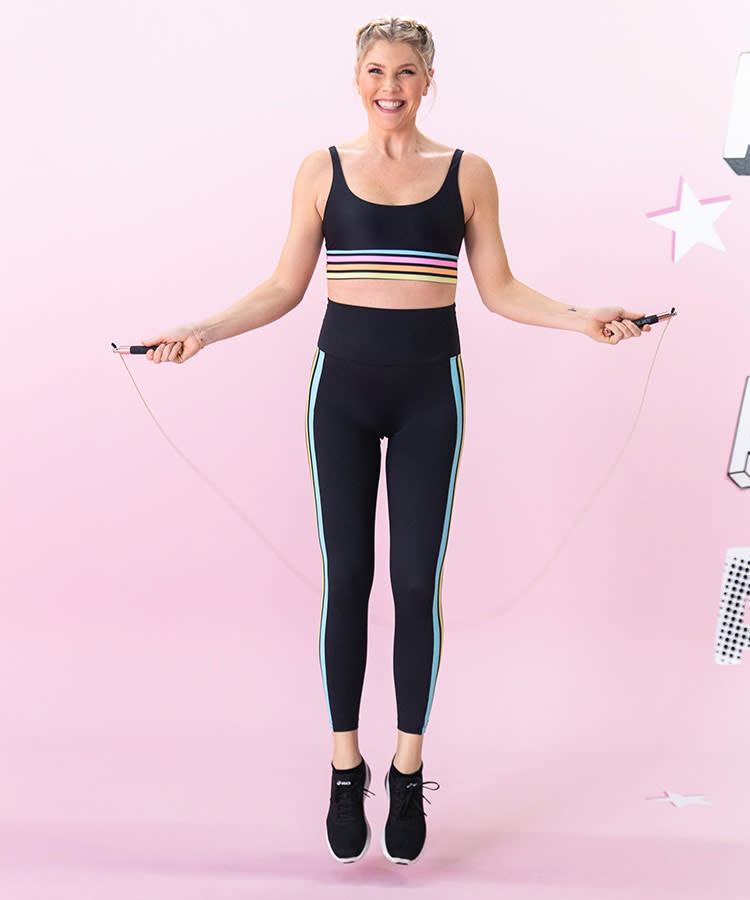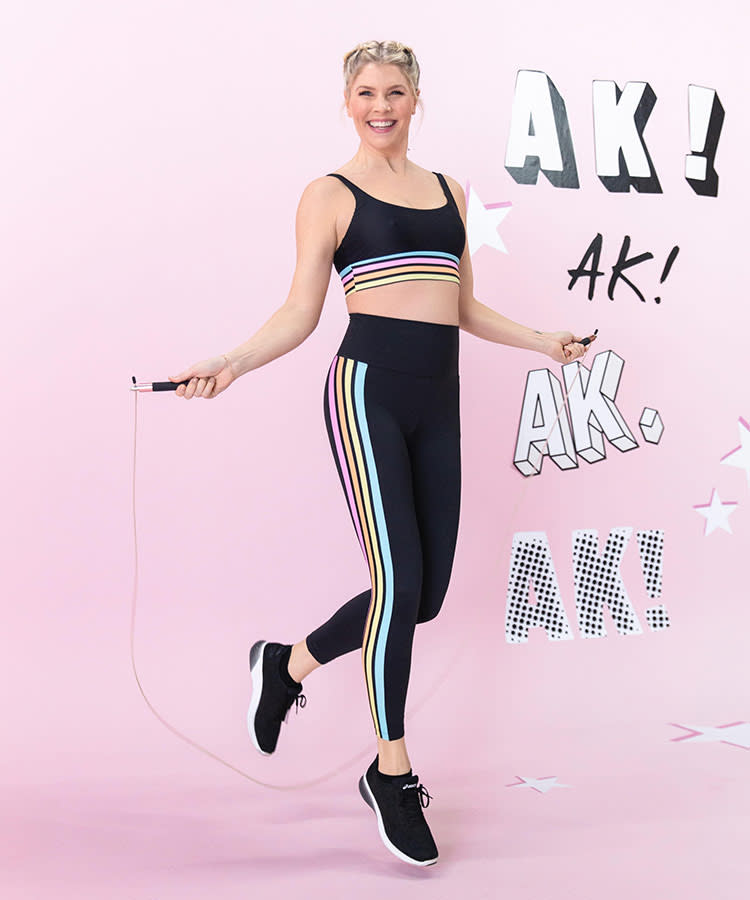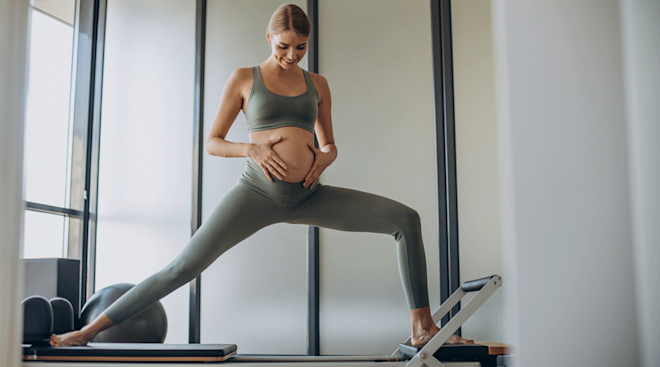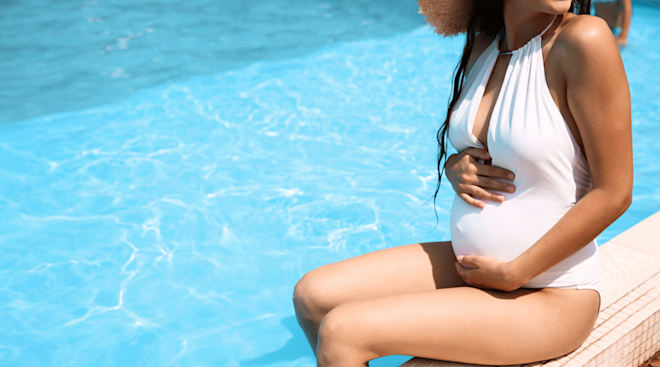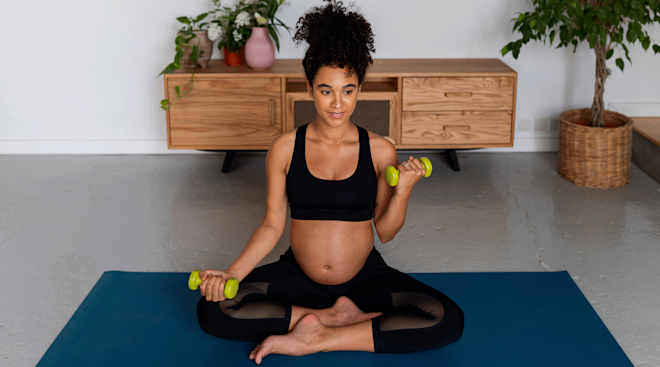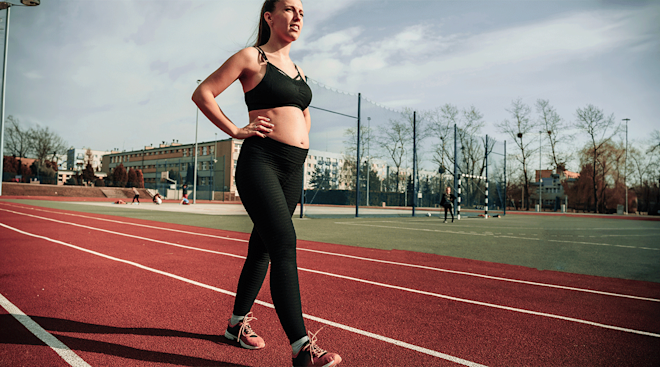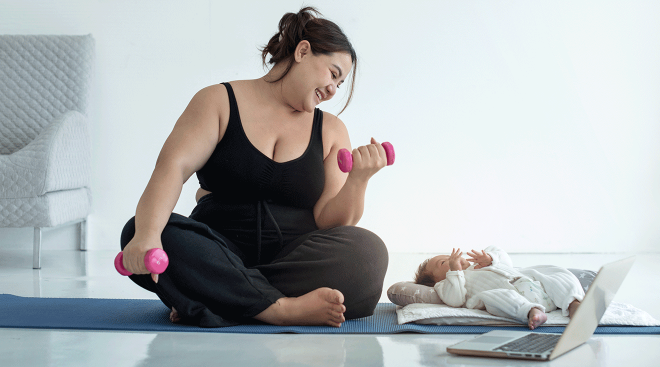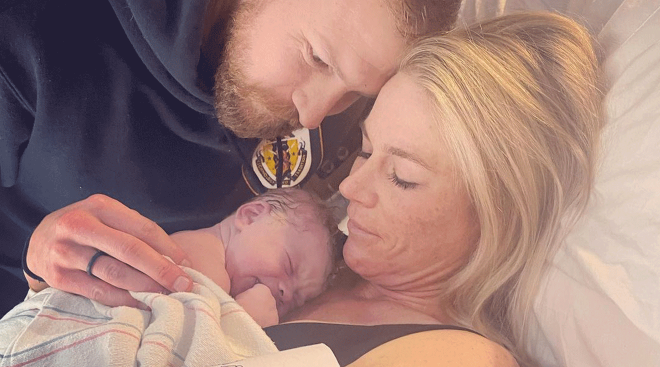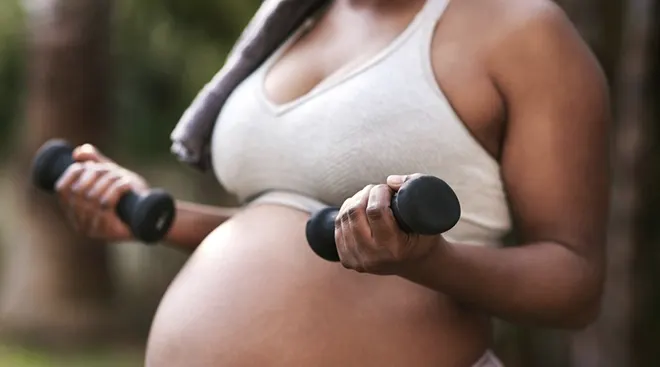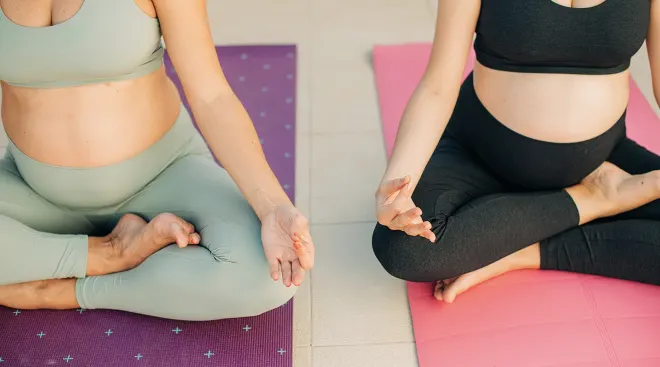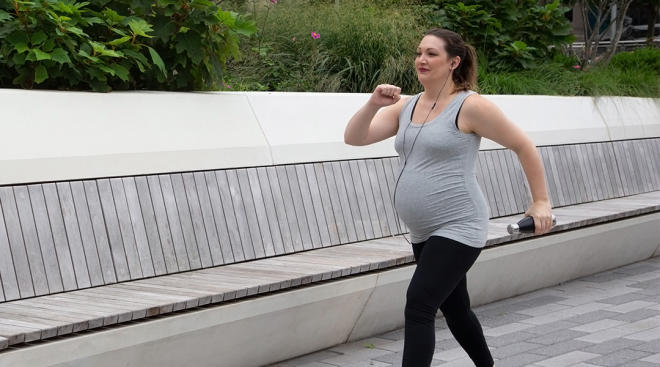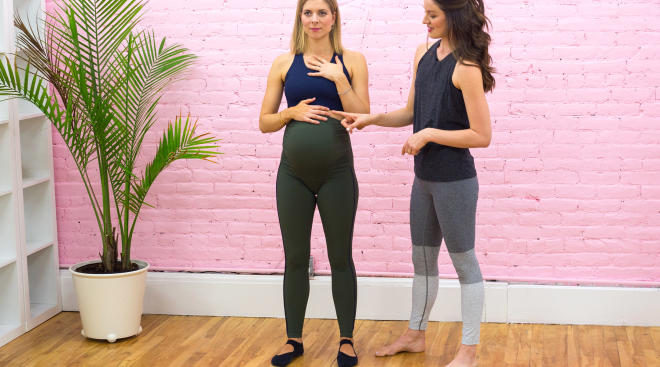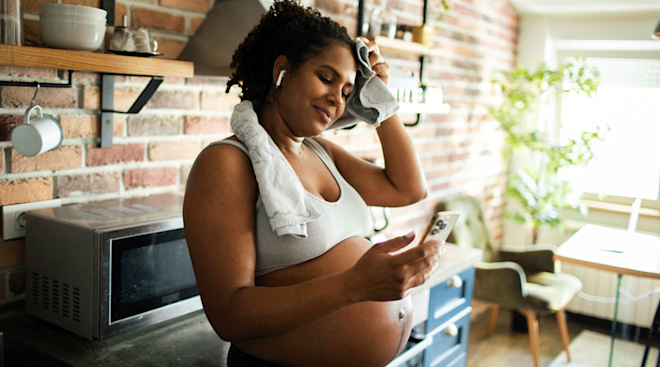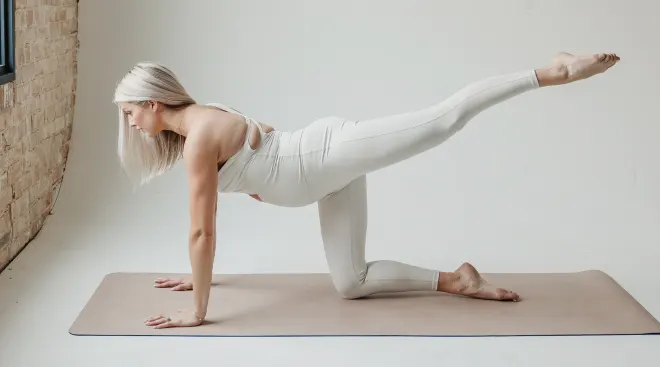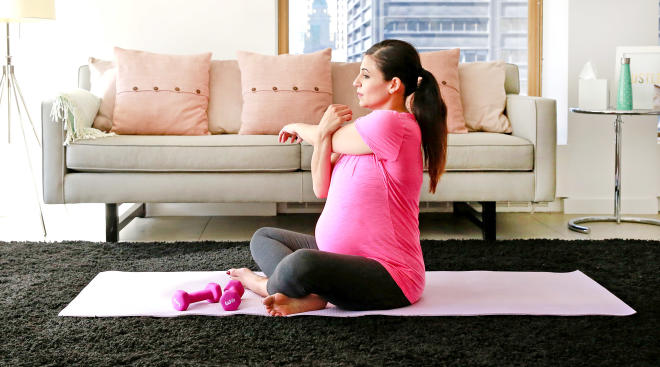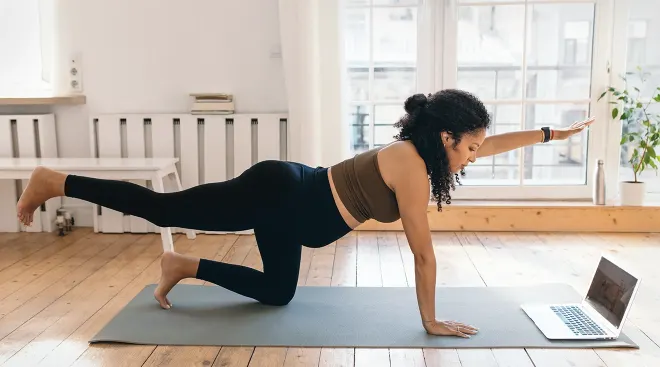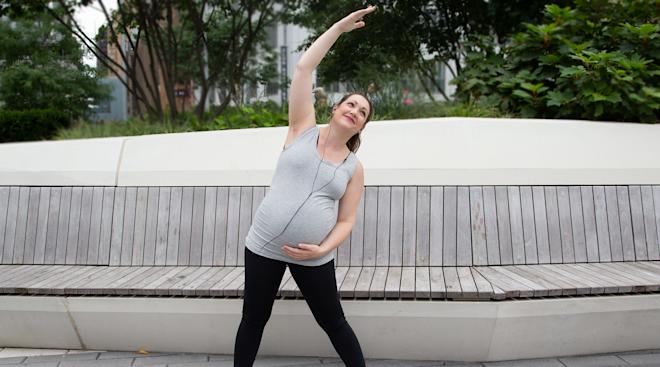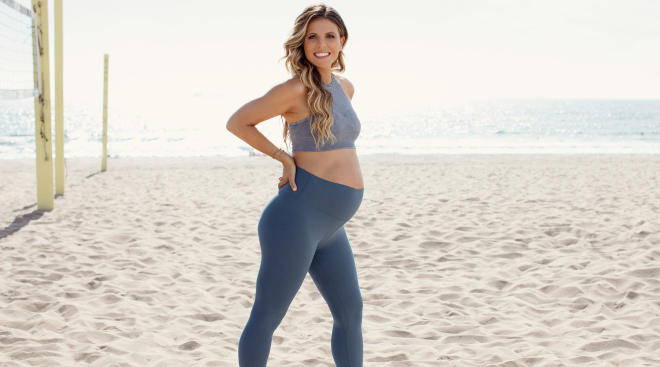How to Jump Rope Your Way to a Fit Pregnancy
We know exercise during pregnancy is important. It not only promotes healthy pregnancy weight gain, but it also helps lower the risk of certain uncomfortable pregnancy conditions (like swelling and even preeclampsia) and strengthens your body for childbirth and beyond. But let’s be honest, when you’re growing a human, exercising doesn’t always sound super-appealing. Which is why fun workouts—like jumping rope—can be the way to go.
“Jumping rope is an amazing full-body workout,” says workout guru Amanda Kloots, founder of AK! Rope in New York City and a mama-to-be. “It works your legs, glutes and pelvic floor, which are very important to strengthen during pregnancy. It also strengthens your upper body, including your arms and back, while working on good posture, which is essential as your belly grows.” Here’s how you can safely jump your way to a fit pregnancy.
Is it safe to jump rope when you’re pregnant? “Yes, provided you’re sensible and careful,” says Iffath Hoskins, MD, an ob-gyn at NYU Langone Health. If you’re enjoying a healthy pregnancy, “Jumping rope is a good form of cardio and helps create good balance and flexibility of the muscles and joints.”
If you’ve never done this type of workout before, Hoskins recommends waiting until after your first trimester to try it out. Even if you are familiar with jumping rope, “Start slow, with just enough intensity so you’re not panting for air and can talk while jumping rope,” she advises. “Start with a running motion (one foot in front of other while using the rope) as it will cause less jarring; it’s more like jogging but with a rope.”
Jumping rope is generally safe throughout pregnancy, Hoskins says—but listen to your body. “Your center of gravity shifts as pregnancy advances, so adjust your activity and posture accordingly,” she advises. Be mindful of your gait, posture and balance so you don’t hurt yourself, and stop if you experience any bleeding, cramping or general discomfort. Other than that, have fun! “I’m currently 22 weeks pregnant and still jumping every day,” Kloots says. “It feels wonderful on my body and joints.”
You don’t need much for a jump rope workout—just a sturdy pair of sneakers, a supportive bra, a jump rope and a flat, even surface.
If you’re a beginner jumper, keep your arms at a 90 degree angle, with your elbows at your waist, Kloots says. Hold each handle with a light grip. Relax your neck and keep tensions in your arms. Keeping your feet close together, squeeze your inner thighs and glutes, Kloots directs. Focus on keeping your abs in and shoulders over your hips as you jump.
Do not jump high! “You only need to jump as high as the rope is thick—meaning you’re barely off the ground,” Kloots says. “Jumping rope is low-impact cardio, which means it’s easy on your joints.”
As you become more advanced, you can ramp up your speed. “I like to go for either a set number of minutes or hit a specific number of jumps,” Kloots says. “For instance, I’ll put 10 minutes on a clock and jump for that time, or I’ll do intervals of 200 jumps in between toning sets.”
Want to change things up? Kloots recommends straddle jumps—meaning jumping with feet slightly apart—to target your outer and inner thighs. To work your quads and hamstrings, Kloots likes ski jumps, where you jump side to side keeping your feet close together. And for inner thigh work, Kloots suggests heel-forward jumps, where you tap your heel down, toes up, while alternating feet.
Published February 2019
Please note: The Bump and the materials and information it contains are not intended to, and do not constitute, medical or other health advice or diagnosis and should not be used as such. You should always consult with a qualified physician or health professional about your specific circumstances.
Plus, more from The Bump:
Navigate forward to interact with the calendar and select a date. Press the question mark key to get the keyboard shortcuts for changing dates.

































